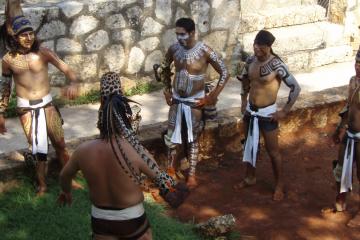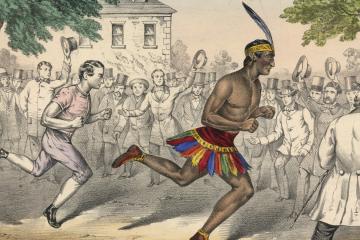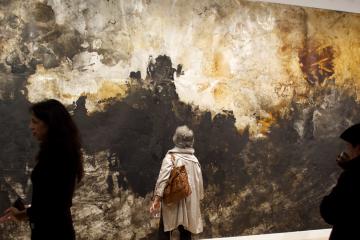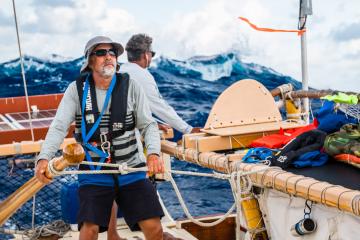
On the Cover
With the world again turning attention to the Olympics, this issue celebrates the long and rich history and remarkable continuity of Native athletics, from the hip-ball players of ancient Mesoamerica, to Iroquois runners to Polynesian mariners. Team sports were central to indigenous communal life long before Columbus, let alone the National Football League and its first president, Jim Thorpe. The Mayan ball player on the cover still has counterparts in several small villages in Mexico. The player’s outfit, the fajado, still serves the same function, although the elaborate hip-guards of the Mayan player have been replaced by strips of automobile tire.
Maya bas-relief depicting a ball player, AD 600-750. La Corona, Department of el Peten, Guatemala. Limestone; 14.6" x 11.2". 24/457. On view in the on-going exhibit Infinity of Nations at the George Gustav Heye Center, New York City




